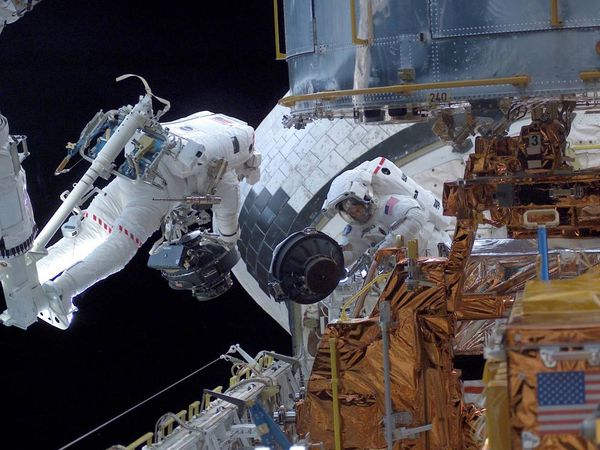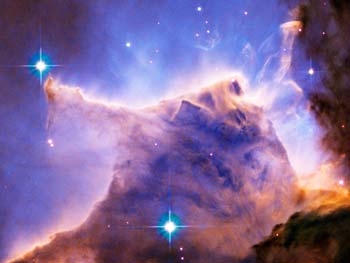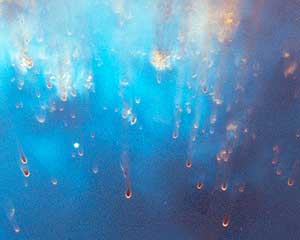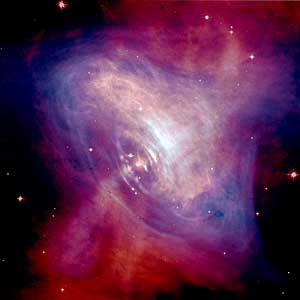The Hubble Space Telescope (HST) is a space-based observatory. It is not the first telescope to be based in space but it is one of the largest and most flexible space telescopes. Here, we explore everything about this telescope including its history, facts, discoveries and spectacular pictures it has captured.

Hubble Space Telescope History
The Idea for a Large Space Telescope is Born
It all began in 1923 when Hermann Oberth, a German scientist, proposed launching a telescope into orbit as a solution to the blockage by the Earth’s atmosphere that made it impossible for Earth based telescopes to capture clear images of the distant universe.
This was not a feasible idea at the time but as rocket launches increased, its possibility increased too. In 1969, the idea to launch the Large Space Telescope was approved although its development was to take a very long time due to funding and technical issues.
Work on the plan to develop the large space telescope began in 1975. The European Space Agency (ESA) collaborated with US’s NASA to develop this space observatory. It is operated by the Space Telescope Science Institute (STSI).
Its name was changed from the Large Space Telescope to the Hubble Space Telescope (HST) in honor of Edwin Hubble, the American astronomer who made significant discoveries about the universe including that the universe did not end with the Milky Way galaxy.
Hubble Space Telescope Launch and Servicing
The Hubble Space Telescope, the first space based telescope, was launched on April 24, 1990 aboard the space shuttle Discovery (STS-31 mission). Its launch alone cost $1.5 billion. It was planned to launch in October 1986 but the Challenger disaster lead to a delay in its launching.
It was only after the telescope reached orbit and started operating that scientists discovered the main mirror had a flaw from a manufacturing error. It took fuzzy images.
Two new cameras were installed in 1993, three years after the error was discovered. The space shuttle Endeavor transported a crew of seven on the repair mission. Since then, it has been serviced and repaired five times. It is the only space telescope to be serviced in space by astronauts.

Amazing Discoveries by the Hubble Space Telescope
The Earth’s atmosphere does not let through most of the light coming from the universe and this makes it hard for even powerful ground-based telescopes to take clear pictures of far away objects and distant galaxies.
The Hubble Space Telescope can see what the Earth’s atmosphere blocks because it is located in space beyond the atmosphere. It takes extremely detailed high-resolution images allowing a closer look into space and time. Its cameras and mirrors observe in the near ultraviolet, visible and near infrared lights and can detect distant star light. It transmits about 120 gigabytes of new data it collects every week.
Due to its elevated perspective and powerful optics, it can observe further away than Erath based telescoped can. It is able to make deep observations and reveal a lot of information about distant objects that other telescopes cannot see, other planets, our universe, distant universe and other galaxies.
HST operates like a time machine. The light it observes has travelled long distances from its source taking a long time to reach the telescope. What the telescope observes and transmits to Earth reveals how the object or universe appeared when the light started its journey. It does not reveal how things are in the present.
Hubble has revealed a lot of information about the formation of the universe. Astronomers were able to determine the age of the universe more precisely by measuring the Cepheid variable, a special type of pulsing star.
HST has also observed stars in different stages of formation as well as other galaxies that neighbor the Milky Way galaxy we live in. For example, it has captured the Magellanic Clouds and Andromeda galaxy. It has revealed 10,000 early galaxies, captured images of dying stars, and observed galactic gas bubbles.
It also made a difficult accomplishment when it took pictures of the planet Fomalhaut b in 2008, becoming the first telescope to image an extrasolar planet in visible light. Planets orbiting other suns are difficult to observe and photograph but Hubble has been able detect their atmospheres as they pass in front of their stars.
Hubble has also transmitted high-resolution images of Jupiter, Saturn and Pluto enabling astronomers to track changes of the planets’ atmospheres and surfaces. For example, HST captured the event when comet Shoemaker-Levy crashed into Jupiter in 1994 and revealed a lot about Jupiter’s atmosphere. It also observed Jupiter changing its stripes where high and low elevation clouds switch places and change shape and color in the process. It has also studied Saturn’s rings, Uranus’ moon, and Mars’ dust storms.
Other great discoveries and research projects include discovering Pluto’s two moons, developing a 3D mapping of mysterious dark matter, establishing the rate at which the universe is expanding and revealing that almost every major galaxy is anchored by a black hole
It has also captured images that are helping in the planning of NASA’s Dawn mission to explore asteroid Vesta and protoplanet Ceres.
Amazing Hubble Space Telescope Pictures
Due to its power, and lack of distortions by the Earth’s atmosphere, the HTS has taken and transmitted wonderful high-resolution images of the universe.
The first pictures taken by Hubble reached Earth in December 1993. Since then, it has taken and transmitted spectacular images of supernovas, nebulae and other objects.
The most popular Hubble picture has to be the Pillars of Creation within the Eagle Nebula. It provides a view of the area where new stars are forming.

It captured the Helix Nebula, which is a planetary nebula found in the constellation Aquarius and referred to as the `Eye of God’.

It transmitted a highly detailed image of the Crab Nebula. This is one of the largest images captured by Hubble.

The Hubble Space Telescope Now and In The Future
The Hubble Space Telescope is still in operation and is set to operate until 2014. Its operation could go up to 2020. After it ceases operating, the James Webb Telescope planned to launch in 2018 will take its place and continue exploring the distant universe.
